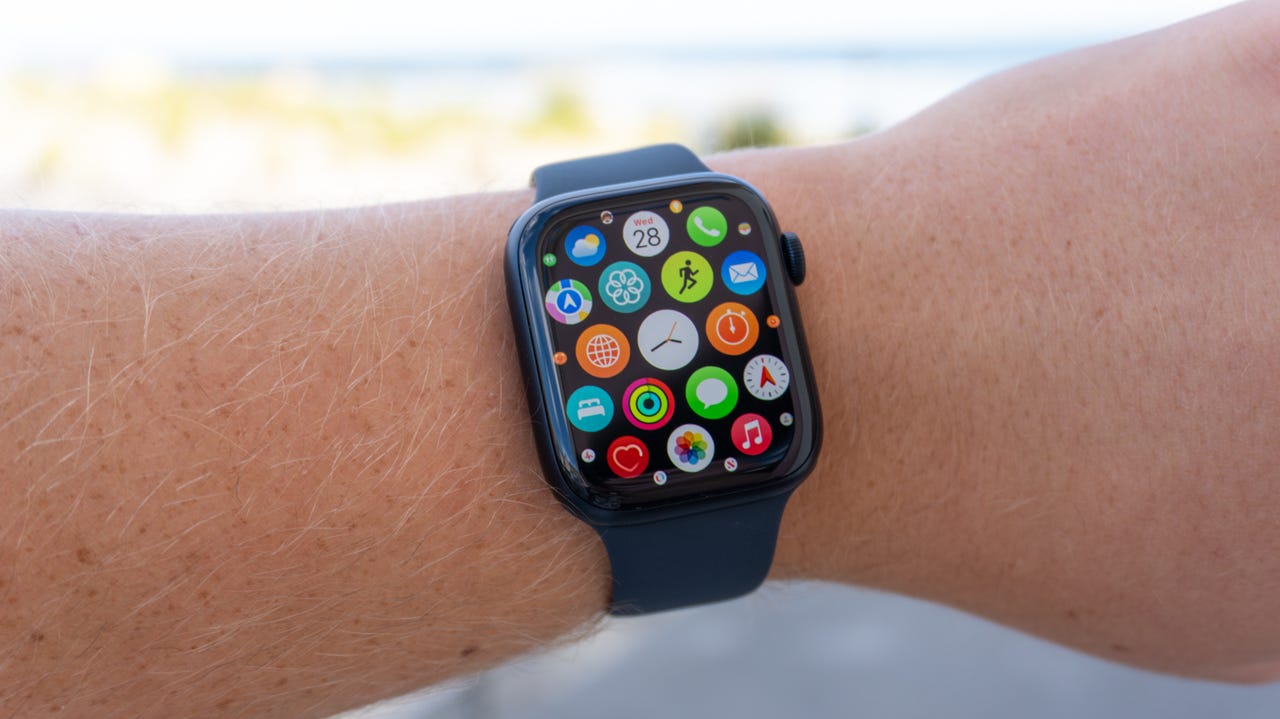'ZDNET Recommends': What exactly does it mean?
ZDNET's recommendations are based on many hours of testing, research, and comparison shopping. We gather data from the best available sources, including vendor and retailer listings as well as other relevant and independent reviews sites. And we pore over customer reviews to find out what matters to real people who already own and use the products and services we’re assessing.
When you click through from our site to a retailer and buy a product or service, we may earn affiliate commissions. This helps support our work, but does not affect what we cover or how, and it does not affect the price you pay. Neither ZDNET nor the author are compensated for these independent reviews. Indeed, we follow strict guidelines that ensure our editorial content is never influenced by advertisers.
ZDNET's editorial team writes on behalf of you, our reader. Our goal is to deliver the most accurate information and the most knowledgeable advice possible in order to help you make smarter buying decisions on tech gear and a wide array of products and services. Our editors thoroughly review and fact-check every article to ensure that our content meets the highest standards. If we have made an error or published misleading information, we will correct or clarify the article. If you see inaccuracies in our content, please report the mistake via this form.
8 Apple Watch settings I changed to dramatically improve battery life

I love my Apple Watch. It's with me wherever I go, whether that's to the gym for my (almost) daily workout or to the office so I can check my notifications at a glance. I like switching between the different watch faces, trying to find the right band to fit my style, and replying to messages with the surprisingly accurate QWERTY keyboard on my wrist. Occasionally, I'll even crack open an app to manage my to-do list or check the tides at Lakes Bay in Atlantic City.
I do all these things on a computer strapped to my wrist, which I find wildly impressive each time I put the Apple Watch on. But the one thing that's driven me crazy for months is the thing that keeps it all running: battery life.
Also: I've tested every Apple Watch model. These are my favorites
When I upgraded my Series 8 to watchOS 10 last September, my battery life went from lasting as much as two days on a single charge to barely making it through one. Why? I have no clue. Maybe it's all the full-screen apps, a core system change, or perhaps Apple didn't optimize it properly. I wrote a whole newsletter about it, too, to which many people reached out to confirm they shared the experience with watchOS 10.
View at AmazonWhatever the reason for the issue, Apple promised to fix it with watchOS 10.1. But even after the upgrade, my Apple Watch battery continues to perform just as poorly, further tempting me to ditch it and go for an Apple Watch Ultra 2 or one of those heavy-duty Garmin watches that last for weeks on end.
Also: I spent a week with the Apple Watch Ultra 2 and here's what stood out the most
Even with a healthy battery life in my device, I'm not sure when the problem originated and how it can be resolved. However, in my search to diagnose my own device, I found a ton of settings that can help boost your Apple Watch battery life, even if it's currently suffering under watchOS 10.
1. Turn off the always-on display
This is the most effective thing you can do to preserve your Apple Watch's battery life. While yes, it can be super inconvenient to ditch the always-on display, it can be the difference between your Apple Watch lasting all day and it dying before dinner time. I turned mine off for a weekend and was surprised to find that it greatly enhances endurance, albeit not to the point of pre-watchOS 10.
How to: On your Apple Watch, head to Settings > Display & Brightness > Always On, then toggle the feature off.
2. Use Low Power Mode when you can
I don't recommend using Low Power Mode all day since it limits the functionality of your Apple Watch, but in a pinch, it can squeeze out a lot more juice than you think. If you drop down to 40 percent by 2 p.m., your watch will last the remainder of the day without issue by using the feature.
How to: Lift your Apple Watch and press the side button to bring up the quick settings menu. Tap your battery percentage, then hit the "Low Power Mode" button. From there, scroll down through the list of features that Apple says the feature will disable. Then, tap the yellow "Turn On" button. You can also schedule it to turn off after a while, if you want.
Also: Apple Watch Ultra 2 vs. Watch Ultra: Is it time to upgrade?
3. Disable cellular connectivity
If you have an Apple Watch with cellular connectivity, it's best to not use your cell connection all the time. At times, depending on your location, your watch can go searching for an active LTE signal, only to spend too much time doing so and never grabbing onto one that's strong enough to preserve your battery. If, for example, you're traveling long distances or chilling at home, it's best to flick it off until you need it.
How to: Open Settings > Cellular on your watch and toggle off "Cellular." Then, when you want to turn it back on, flick the switch again. It's worth noting that airplane mode will essentially do the same thing, but it also turns off Wi-Fi which you need for certain things, so manually disabling cellular data will save some steps.
4. Turn off background app refresh
If you have a good amount of apps on your watch, chances are they're fetching data in the background so that they remain up to date. This, as you would imagine, requires power from the battery. If you're only using said apps sporadically throughout the day, there's no sense in having them locked and loaded 24/7–just refresh their data when you open them.
In my usage, turning the feature off hasn't made a huge difference for battery life, but it's enough to slightly improve endurance without affecting functionality all that much.
How to: Go to Settings > General > Background App Refresh on your Apple Watch and toggle the feature off.
5. Turn off irregular heart rate notifications
With some of the newest Apple Watches, Apple includes a feature that can alert you when your heart rate is beating in irregular intervals and alert you when it may be atrial fibrillation. While that's nice to have for tracking your health over time, it means the heart rate sensor is constantly on collecting your heart rate, which isn't good for battery life.
How to: Visit Settings > Heart > Irregular Rhythm Notifications and flick the feature off.
6. Reduce the amount of notifications you get
When a notification comes in, it not only plays a "ding!" to alert you, it also vibrates your Apple Watch and lights up the screen. While your notifications won't drain your battery in excess, if you get enough of them throughout the day, you'll definitely notice a difference in endurance.
How to: On your iPhone, open the Apple Watch app and navigate to "Notifications." From there, you'll be presented with a list of the apps on your phone that are sending notifications to your watch. Go through the list and turn off the ones you don't want to receive any longer. You also have the option to group notifications together if a particular app sends you a lot during the day but you want to keep them on.
Also: The best smartwatches you can buy: Expert tested
7. Turn off Siri
Ah, Siri. Many people swear by the voice assistant and use it daily to do things like check the weather, start a timer (or two), play some music, or start a workout. But if you're like me (and, presumably, many others), you don't touch Siri at all on your Apple Watch, and it's just sitting there wasting your battery, constantly listening to hear that magical phrase "Hey, Siri." In other words, you should turn it off.
How to: On your Apple Watch, head to Settings > Siri and under "Ask Siri," choose "Listen For." From that list, tap the "Off" button. This will disable the mics and only let you trigger Siri by long-pressing the Digital Crown.
8. Factory reset your Apple Watch (a.k.a. the last resort)
I've heard from many folks who have faced issues with battery life on the Apple Watch that it's best to do a complete factory reset. Full disclosure: it's not going to work for everyone, but if you've exhausted every option on your Apple Watch to extend battery life, the battery is still healthy, and you don't want to upgrade, your best bet is to reset it and start from scratch. That way, you can set up your watch and, along the way, spot the app or service that drains your battery the most. It may also help clean up some of the system bloat in watchOS 10 that's led to poor efficiency on your watch.
How to: Go to Settings > General > Reset on your Apple Watch, then choose "Erase All Content and Settings." You won't have to disable Find My or get rid of your cellular plan since you'll be setting it up with your iPhone again, but if you want to get rid of absolutely everything, make sure you disable Find My and dump your cellular plan during the process.
